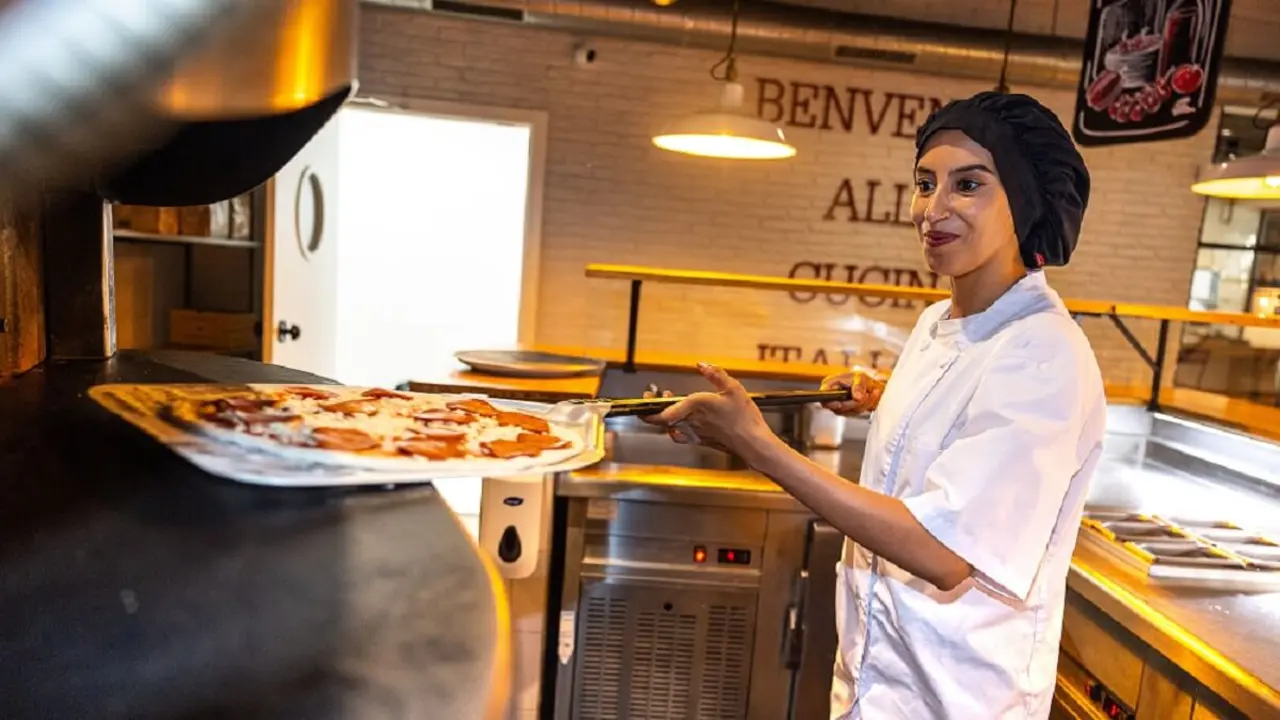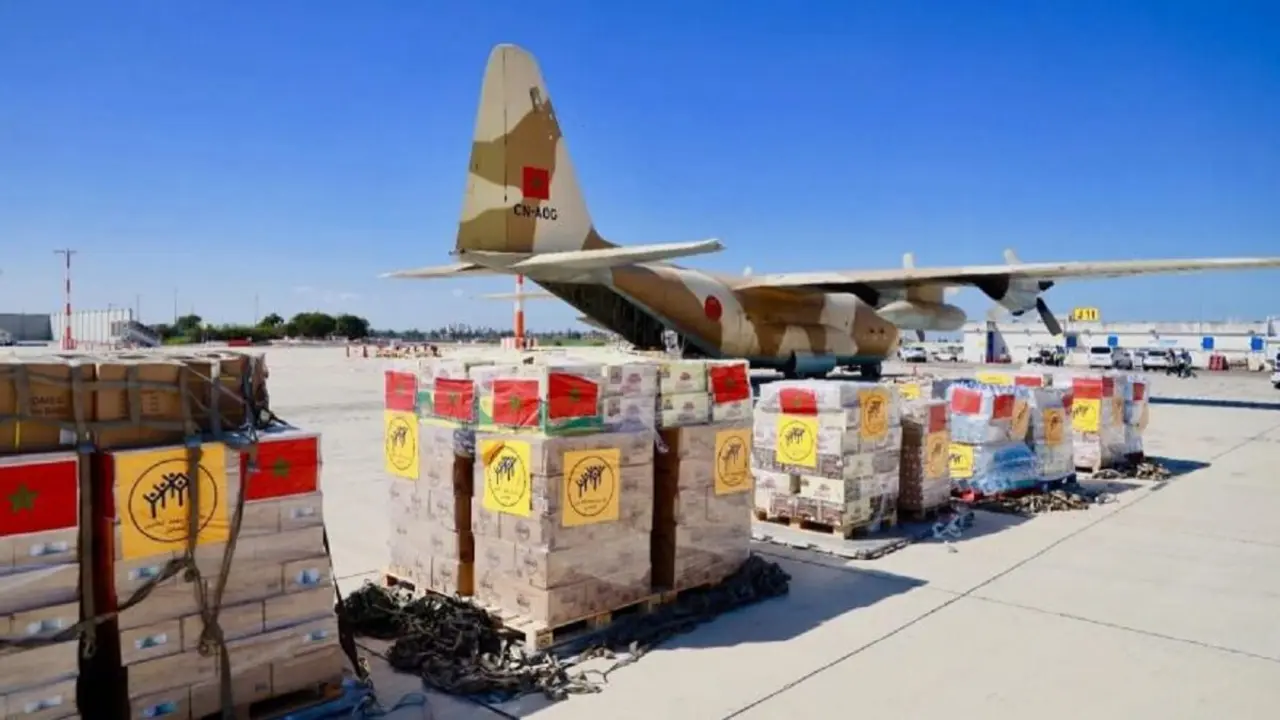Los brotes de coronavirus en centros industriales y familias comprometen la desescalada en Marruecos

The big headache for Moroccan health authorities now is the outbreaks detected in industrial centres and families in recent weeks. The relatively limited number of COVID-19 infections in the Maghreb country has allowed its authorities to trace each case individually to track the pathogen and isolate the affected individual or group of people to prevent further spread. However, major outbreaks in production centres, as well as in certain family units, in cities such as Tangier, Casablanca, Fez and Larache, complicate the process and compromise the de-escalation process. Initially, the state of health emergency will end on 20 May and, with it, general confinement. But many people assume that, at the very least, the de-escalation process will be very slow and gradual. And no one rules out the possibility that the state of emergency may be prolonged.
Despite the establishment of the state of emergency on March 20, the local authorities allowed certain companies to continue their activities under the condition of complying with a health protocol. But the continuous dripping of cases in workplaces, mainly factories, shows that the required measures have not been complied with. The cascade of outbreaks has led the Moroccan authorities to announce, since the end of last month, audits through inter-ministerial teams - made up of members from the areas of Health, Interior, Labor and Industry - in order to stop the spread of COVID-19. According to data offered in the Parliament by the Minister of Industry, Moulay Hafid Elalamy, as of 11 May, a total of 1,590 companies had undergone this type of examination, although he did not specify how many of them did not pass.

In conclusion, the authorities are now struggling between starting the de-escalation, with a suffocated Moroccan economy and millions of people in a precarious situation, and maintaining strict containment measures to prevent the pandemic from getting out of control. All the demonstrations in the last days of the members of the Government, who are avoiding advancing a schedule for deconfinement, are marked by prudence.
The case that set off the alarms, in the middle of last April, about the outbreaks in industrial centres was staged in a factory in the town of Ain Sebaa. After one of its employees tested positive, the subsequent exhaustive control carried out on the rest of the workers revealed a worrying figure: 111 infections. The metropolitan area of Casablanca -where Ain Sebaa-, with five million inhabitants, is the main economic centre of Morocco and the largest population agglomeration in the country. It is also the area most affected by the epidemic, with 28% of the cases nationwide as of May 15.

"These massive outbreaks show that the health instructions are not being followed. The awareness campaigns have not been very effective, which adds to a cultural problem, since discipline is not our strong point. There is a clear problem and it is difficult to reconfigure the structure of these factories and ensure their productivity,” tells to Atalayar Nadia Hmaity, a member of the Democratic Association of Moroccan Women. "The factory owners are completely responsible. We denounce the irresponsible behaviour of certain businessmen and their laxity with regard to the measures of the state of health emergency," the Moroccan activist concludes.
The largest outbreak detected so far occurred on May 5. At least 450 workers - in a still provisional assessment, from the 12th of this month - from a factory in Sidi Bernoussi, also in the surroundings of Casablanca. Specifically, these are the plants of Pretty Shoes, Cochazur and Shoes Diffusion, all manufacturers of footwear destined for export for the Italian brand Geox and owned by the Mahlou family, according to the digital Le360. The three factories employ a thousand people. "The appearance of this new source of infection falls like a cold shower while the government multiplies actions to encourage companies to resume their activity as soon as possible," wrote the aforementioned official media.

On May 9th, on the same website of the digital semi-official Le360, it was reported that the company STMicroelectronics, based in Bouskoura, also in the metropolitan area of the considered economic capital of Morocco, had decided to continue its activity despite the fact that since April 2nd, 12 cases had been confirmed among its workers. The director of the company regretted in declarations to the aforementioned media "not being a multinational" and "not being able to afford to close the doors of the factory". A day later, he also reported the outbreak in a hammam or public bath in Marrakech. Another of the great cases of massive infections of this pandemic in Morocco took place in a prison in the south of the country. Specifically, in the town of Ouarzazate. There, at the end of last month, 200 infections were detected.
In addition, many of the workers in these factories live in a district of Mohammedia, a coastal urban centre near Casablanca, where two hundred cases have been reported. This, considering the overcrowded conditions characteristic of some of these districts, favours the continued spread of the disease.

"Casablanca must be put under quarantine", was the headline of a report in the weekly Maroc Hebdo on May 14th. "Confinement has left social inequalities, mainly in terms of lost income; deconfinement will do the same (...) The challenge is to learn how to live with the virus; that everyone should protect themselves and not contaminate others. But according to their socio-economic level, all Moroccans will not face COVID-19 in the same conditions, because the most precarious will be those who are most exposed", writes Solene Paillard in the digital Médias24.
Hmaity also recalls that the majority of the workers in these factories are women. "The situation of women is particular. In these factories in the food or textile sectors, they are in the majority and find themselves in very precarious situations: they work in high-density conditions, are more sociable and are closer to each other. This explains the particular spread of the virus among them," she told Atalayar. "And these women have infected other members of their family, and the household economy depends on them," she adds.

But the most mediatic of the outbreaks occurred within the Royal Guard in Rabat. According to Moroccan media such as Le Desk or Maghreb Intelligence, around 130 members of the body have been infected with coronavirus. On 7 May General Mimoun Mansouri, head of the Royal Guard, was relieved. His successor is General Abdelaziz Chater.
It is not only the workplaces that are of concern. The Moroccan authorities have also detected major outbreaks in households throughout the country, from Tangier to Marrakech via Fez and Tetouan. "A bomb with a delayed effect". This is how a Moroccan environment described the possibility that, sooner or later, the markets - a fundamental element of the economy and culture of Morocco, both in cities and small towns -, the medinas as a whole or the ports, would end up being uncontrolled pictures - if they are not already - of the pandemic. As the neighbouring country approaches 60 days of confinement, signs of relaxation begin to be detected in the streets of Morocco's big cities.

"At the beginning of the pandemic, people were afraid and slogans were respected. But this, coinciding with Ramadan, is going to decrease. I'm disappointed by the level of unconsciousness in Morocco. The future is very uncertain," Nadia Hmaity herself admitted to this publication.
Although incomparable in its magnitude to the situation in European countries, the pandemic is far from being controlled in Morocco. At the time of writing, 6,870 cases of coronavirus infection and 192 deaths have been recorded in the neighbouring country.








